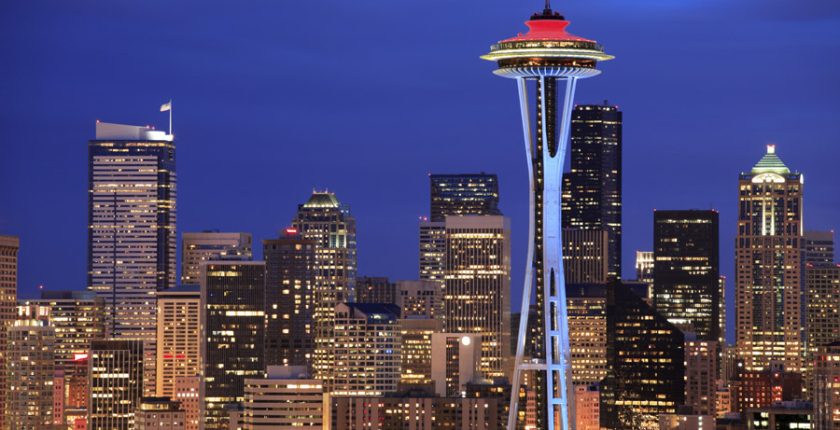Driving in Seattle
Driving in Seattle, Washington, can be challenging—rain, rush-hour traffic, temporary HOV lanes, one-way downtown streets, hard-to-navigate hills, and unexpected toll roads add to the confusion. Seattle has managed to land itself on a few lists, and it regularly appears among the cities with the worst traffic in the country.
Rules of the Road
Seattle’s geography—having hills, lakes, and bordering the Puget Sound—creates unique challenges for driving. Add in rush hour traffic, which tends to get worse as the week wears on, and special issues related to buses, pedestrians, and bike riders, and you have some real navigation problems.
- Rush hour: Seattle’s rush hour starts around 6:30 a.m. and often extends until 9 a.m. Evening rush hour is worst from 5–6 p.m. Friday often has the worst traffic, but it’s not uncommon to get stuck any day of the week. If you drive any route regularly, you’ll figure out where those slowing spots will be. Some travelers passing through Seattle plan their trips from 10 a.m. to 3 p.m to avoid these expected rush hours.
- Avoiding cyclists: Seattle has a ton of bicyclists, many of whom are responsible and obey the biking rules of the road, some of which may be confusing to motorists. For example, bicycles are not required to use a bike lane or shoulder in Seattle and bicycles can ride on the left (with the traffic flow) on one-way streets.
- One-way streets: Parts of Seattle are filled with one-way streets. Seattle natives are used to the one-ways and know where to go, but if you’re new to the city or just visiting, it’s worth using a GPS or studying the maps ahead of time. If you miss your turn, correcting the issue may be as simple as looping back around and making a second go. In some spots, especially downtown, you’ll pass no-left-turn signs galore and may end up discovering new parts of the city—and tacking on a lot more time to your trips.
- HOV lanes: HOV (High Occupancy Vehicle) lanes in Seattle either require 2 or 3+ persons per vehicle, depending on the highway or time of day. Carpools, vanpools, and buses use the HOV lane and motorcycles are allowed to use all standard HOV lanes. Direct access ramps allow buses, carpools, vanpools, and motorcycles to directly access the HOV lanes in the center of the freeway—they come down from above the roadway, or up from below, and merge into the HOV lane from inside the median.
- Toll lanes: The I-405 express toll lanes and SR 167 HOT (High Occupancy Toll) lanes are a form of HOV lane that can also be used by non-HOV drivers who choose to pay a toll. Toll rates adjust every few minutes based on real-time traffic conditions to keep the traffic flowing.
- Buses and bus lanes: If you’re the car right behind a bus, you’ll be stuck while everyone behind you whips into the other lane. And when you are driving on the freeway, don’t think you can drive on the shoulder because you see a bus there—bus shoulder lanes are authorized bus-only lanes that run along selected freeways.
- Unexpected lane changes: City and residential-area streets alike often go from one to two lanes. Sometimes streets have room for parking and a single lane of driving but might look suspiciously like a two-lane road. If you don’t see a stripe down the middle, don’t assume the traffic is two-cars wide. Keep an eye out for drivers who miss this and suddenly merge into the single-lane flow when they realize the error of their ways.
- Distracted driving law: Washington law makes it illegal to hold a phone while driving, though talking with a hands-free device is allowed. The law also prohibits doing things like eating, applying make-up, or shaving while driving.
- In case of emergency: In case of emergency, call 911. While driving, if an emergency vehicle is approaching, drivers going both ways need to pull over and stop on an undivided highway regardless of the number of lanes. In Washington, if you see an emergency vehicle pulled over on the side of the road, state law requires you to get out of the lane closest to the stationary vehicles if you are traveling in the same direction, and it is safe to do so. If it is not safe, drivers are required to slow down.

